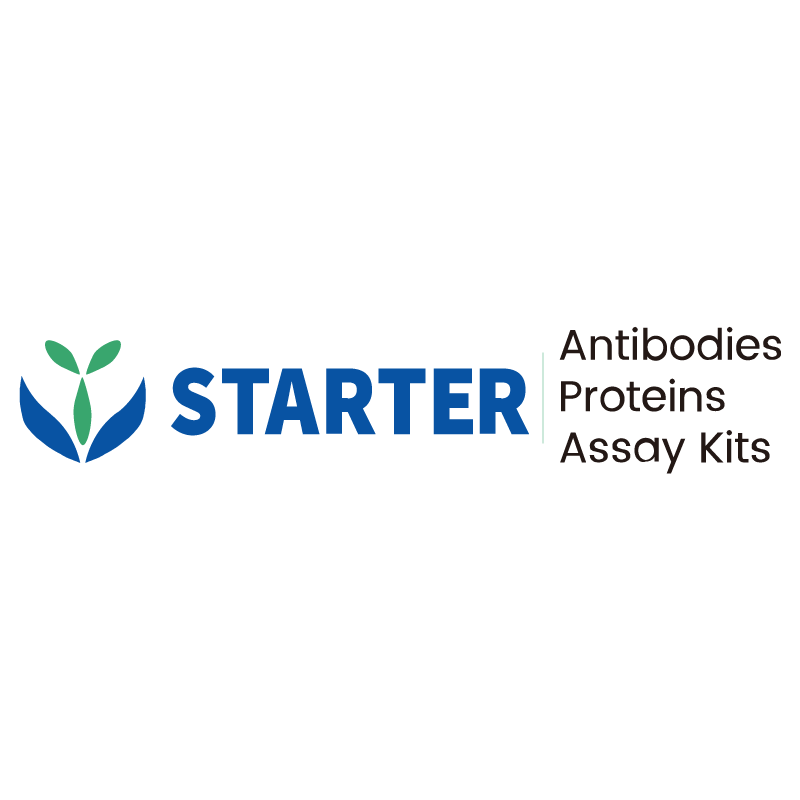WB result of Ctip2 Recombinant Rabbit mAb
Primary antibody: Ctip2 Recombinant Rabbit mAb at 1/1000 dilution
Lane 1: Raji whole cell lysate 20 µg
Lane 2: Molt-4 whole cell lysate 20 µg
Lane 3: Jurkat whole cell lysate 20 µg
Negative control: Raji whole cell lysate
Secondary antibody: Goat Anti-Rabbit IgG, (H+L), HRP conjugated at 1/10000 dilution Predicted MW: 96 kDa
Observed MW: 115 kDa
Product Details
Product Details
Product Specification
| Host | Rabbit |
| Antigen | Ctip2 |
| Synonyms | B-cell lymphoma/leukemia 11B; BCL-11B; B-cell CLL/lymphoma 11B; COUP-TF-interacting protein 2; Radiation-induced tumor suppressor gene 1 protein (hRit1); RIT1; BCL11B |
| Immunogen | Synthetic Peptide |
| Location | Nucleus |
| Accession | Q9C0K0 |
| Clone Number | S-1375-21 |
| Antibody Type | Recombinant mAb |
| Isotype | IgG |
| Application | WB, IHC-P |
| Reactivity | Hu, Ms, Rt |
| Positive Sample | Molt-4, Jurkat |
| Purification | Protein A |
| Concentration | 0.5 mg/ml |
| Conjugation | Unconjugated |
| Physical Appearance | Liquid |
| Storage Buffer | PBS, 40% Glycerol, 0.05% BSA, 0.03% Proclin 300 |
| Stability & Storage | 12 months from date of receipt / reconstitution, -20 °C as supplied |
Dilution
| application | dilution | species |
| WB | 1:1000 | Hu |
| IHC-P | 1:100-1:200 | Hu, Ms, Rt |
Background
Ctip2, also known as COUP-TF interacting protein 2 or BCL11B, is a multifunctional transcription factor involved in numerous cellular physiological processes. It plays a significant role in skin development and maintenance, particularly in the regulation of the epidermal permeability barrier (EPB), wound healing, inflammatory diseases, and epithelial cancers. It also has a relatively unexplored connection with lipid metabolism control and its impact on EPB homeostasis, delayed wound healing, exacerbation of inflammatory diseases, and promotion and progression of cancer. Ctip2 controls keratinocyte proliferation and cytoskeletal organization, and regulates the onset and maintenance of differentiation in keratinocytes. It integrates keratinocyte proliferation and the switch to differentiation by directly and positively regulating EGFR transcription in proliferating cells and Notch1 transcription in differentiating cells. Ctip2 is known for its role in DNA double-strand break (DSB) repair and genome stability. It is an interacting partner of the Mre11/Rad50/Nbs1 (MRN) DNA damage sensor protein complex, which recognizes DNA double-strand breaks and promotes the resection of 5′ strands to generate 3′ single-stranded intermediates necessary for homologous recombination. Ctip2 is central to the differentiation of medium spiny neurons (MSN) and striatal development. In the absence of Ctip2, MSN do not fully differentiate, leading to severely disrupted patch-matrix organization within the striatum, which is critical in motor control and affected in diseases like Huntington's. Ctip2 is also involved in the formation of T lymphocytes, which is crucial for the immune system.
Picture
Picture
Western Blot
Immunohistochemistry
IHC shows positive staining in paraffin-embedded human thymus. Anti-Ctip2 antibody was used at 1/100 dilution, followed by a HRP Polymer for Mouse & Rabbit IgG (ready to use). Counterstained with hematoxylin. Heat mediated antigen retrieval with Tris/EDTA buffer pH9.0 was performed before commencing with IHC staining protocol.
IHC shows positive staining in paraffin-embedded human tonsil. Anti-Ctip2 antibody was used at 1/100 dilution, followed by a HRP Polymer for Mouse & Rabbit IgG (ready to use). Counterstained with hematoxylin. Heat mediated antigen retrieval with Tris/EDTA buffer pH9.0 was performed before commencing with IHC staining protocol.
IHC shows positive staining in paraffin-embedded mouse cerebral cortex. Anti-Ctip2 antibody was used at 1/200 dilution, followed by a HRP Polymer for Mouse & Rabbit IgG (ready to use). Counterstained with hematoxylin. Heat mediated antigen retrieval with Tris/EDTA buffer pH9.0 was performed before commencing with IHC staining protocol.
IHC shows positive staining in paraffin-embedded mouse spleen. Anti-Ctip2 antibody was used at 1/200 dilution, followed by a HRP Polymer for Mouse & Rabbit IgG (ready to use). Counterstained with hematoxylin. Heat mediated antigen retrieval with Tris/EDTA buffer pH9.0 was performed before commencing with IHC staining protocol.
Negative control: IHC shows negative staining in paraffin-embedded mouse liver. Anti-Ctip2 antibody was used at 1/200 dilution, followed by a HRP Polymer for Mouse & Rabbit IgG (ready to use). Counterstained with hematoxylin. Heat mediated antigen retrieval with Tris/EDTA buffer pH9.0 was performed before commencing with IHC staining protocol.
IHC shows positive staining in paraffin-embedded rat cerebral cortex. Anti-Ctip2 antibody was used at 1/200 dilution, followed by a HRP Polymer for Mouse & Rabbit IgG (ready to use). Counterstained with hematoxylin. Heat mediated antigen retrieval with Tris/EDTA buffer pH9.0 was performed before commencing with IHC staining protocol.
IHC shows positive staining in paraffin-embedded rat spleen. Anti-Ctip2 antibody was used at 1/200 dilution, followed by a HRP Polymer for Mouse & Rabbit IgG (ready to use). Counterstained with hematoxylin. Heat mediated antigen retrieval with Tris/EDTA buffer pH9.0 was performed before commencing with IHC staining protocol.


